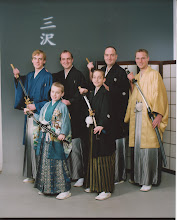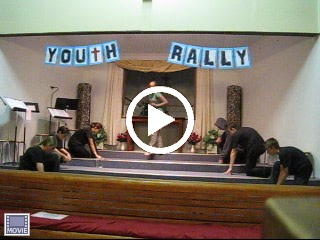What is family? It is amazing how the Japanese families seem to stay intact with the long work shifts and long school days. Shintoism supports the structures of the community, hence they support the family. Shintoism promotes group values by expressing them through a set of symbols. The local shrine is the center for many families religious life. Many families have their own kamidana, a small “shrine” that hangs on the wall in their house. Purifying and praying to the Kami are done at these in the home, but for moments of great joy for a family, a wedding or a baby is born, are celebrated and blessed by the Shinto priest at the local shrine. While the sad and “deadly” things of life are conducted at the Buddhist Temple. One is born a Shinto and dies Buddhist.
The Shinto Shrine is what ties all of these foundations together. A shrine is considered a sacred place, because that is where the Kami reside, it is their house. This makes the shrines the most scared place to the Shinto religion. All shrines are marked by a Torii Gate. Sometimes the gate is red and made of wood. Or sometimes it is white and made of brick. The designs differ from region to region and shrine to shrine, but the basic concept is the same: It separates the common ground from the sacred ground. All shrines have their property marked off by a fence or a warning statue so you won’t enter a sacred place with your impure self, thus angering the Kami.
Shinto’s don’t go to the Shrine for regular service (like the Jews or Christians do with synagogues or churches). They go to the Shrines when they are facing a large test, they want help with a relationship, they want to clear their mind, or they need a blessing in something they are about to undertake. The list is infinite. They believe it brings good luck to go and pray to the Kami at the Shrine. The Shrines sell good luck charms and amulets. Before a Shinto can pray, they have to throw money into the Shrine’s alter. The Kami may answer the prayer by giving them their request, but sometimes not and then they’re out a couple of hundred yen.
Shinto’s are very superstitious, a testament of this could be how they build the Shrines. The Shrines are built facing the east; never the north, which stands for death, or the west, which stands for bad luck. The reason for the east could be possibly be that the sun rises in the east, bringing light to the world and sets in the west, bringing darkness.
In conclusion, Shintoism is a very loose religion. It is very possible for one to be a Shinto and a Buddhist at the same time. As is the case with all nations and cultures, with a new generation comes a slightly different take on religion and tradition. To most the younger Japanese, they see Shintoism and Buddhism as a cultural thing, not religious. That is how they can justify being a Shinto and Buddhist at the same time; because being Shinto and Buddhist are part of who they are as Japanese. In America, ones national identity is not measured by whether the person is Christian or Atheist, but it is completely the other way around in Japan. If you are Japanese, then you ARE Shinto and Buddhist.
Shintoism is full of self contradictions, like why would society, without laws and government, fall into chaos if mankind is good? But it is never questioned because that would be an act of individuality, and besides, how do you dispel a belief that has been practiced for thousands of years?
You cannot carry your cross while sitting on the fence
Remember Who We Are
Friday, April 16, 2010
Subscribe to:
Post Comments (Atom)
votejaredn29









2 comments:
Hi Jared
Good artile. You may want to do another read through it.
Love you
Dad
grammarical, or content?
Post a Comment